#HomeMaintenanceTips
Explore tagged Tumblr posts
Text


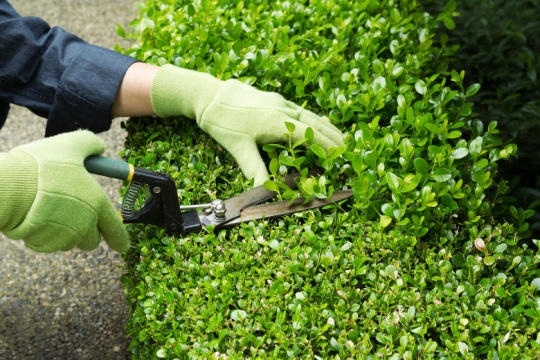









Maximize your outdoor space's beauty with these essential maintenance tips. From regular cleaning to seasonal upkeep, ensure your outdoor area remains a stunning oasis where you can relax, entertain, and connect with nature. 🌿✨
#outdoorspace#maintenancetips#outdoorareamaintenancetips#outdoorarea#outdoormaintenancetips#homemaintenance#maintenance#outdoormaintenance#homemaintenancetips
14 notes
·
View notes
Text
🔨 Strong Roof. Safe Home. Trusted Roofing in Fair Oaks & Sacramento
Your roof is more than just shingles—it's your first line of defense against the elements. If you’re seeing signs of wear, missing shingles, or leaks, now’s the time to act.
At Larios Roofing, we’re proud to be the go-to roofing contractor in Fair Oaks, offering everything from quick roof repairs to complete roof replacements for homes and businesses.
With years of experience serving both Fair Oaks and the greater Sacramento area, our team provides:
Durable roof replacements that stand up to weather and time
Fast, reliable service for emergency and routine repairs
Honest inspections and free, no-pressure estimates
Metal roofing options for energy efficiency and longevity
Don’t just search for roof repair near me—choose a name you can trust.
From Sacramento to Fair Oaks, we’re the roofing professionals your neighbors count on.
#RoofingContractorInFairOaks#RoofReplacementFairOaks#RoofRepairNearMe#SacramentoRoofingContractor#HomeMaintenanceTips#RoofingSolutions
0 notes
Text

Keep Your Chimney in Top Shape with Advantage Chimney Services
When it comes to home safety and comfort, chimney maintenance is often overlooked—but it's essential. If you're searching for a trusted chimney sweep in my area, Advantage Chimney Services in Idaho Falls delivers thorough inspections, cleanings, and repairs to keep your fireplace functioning safely and efficiently.
Why Routine Chimney Maintenance Matters
Creosote buildup, animal nests, and cracked flue liners are just a few of the hazards that can develop inside your chimney over time. Regular chimney maintenance not only prevents fire hazards but also improves your fireplace’s efficiency. Advantage Chimney Services offers expert care tailored for the unique needs of Idaho Falls homeowners.
Looking for a Chimney Sweep in Idaho Falls?
Whether it’s your annual cleaning or a more complex repair, our certified technicians have the experience to get the job done right. When people search for a chimney sweep Idaho Falls residents trust, Advantage Chimney Services is the name they find. Our team uses advanced tools and techniques to remove debris and diagnose structural issues before they become dangerous or costly.
Schedule Before the Season Starts
Avoid last-minute issues during the colder months. Scheduling service now ensures your fireplace is ready to go when you need it. With our flexible appointments and reliable service, it’s never been easier to cross chimney maintenance off your list.
0 notes
Text
Why Reliable Garage Door Repair Matters for Homeowners - San Diego News 24
When you think about the safety, security, and convenience of your home, your garage door might not be the first thing that comes to mind—but it should be. As one of the largest and most frequently used entry points of a home, a garage door plays a critical role in your daily life. Whether you’re coming home after a long day or heading out for work early in the morning, your garage door quietly and reliably does its job—until it doesn’t.
#GarageDoorSafety#HomeSecurityTips#SmartHomeLiving#GarageDoorMatters#EverydayHomeEssentials#HomeConvenience#CapeCoralHomes#ReliableHomeAccess#SecureEntry#HomeMaintenanceTips
0 notes
Text
Protect Your Home From the Ground Up: Smart Termite Control Every Homeowner Should Know

Termites are tiny insects, but their damage isn’t small. In fact, they cause billions in property destruction every year—often without being noticed until it’s too late. As a homeowner, knowing how to prevent termite damage is essential to keeping your home safe, strong, and secure.
Let’s walk through proven strategies that help you stop termites before they become a serious problem.
Spot the Signs Before It’s Too Late
Most homeowners don’t realize they have termites until visible damage appears. To catch them early, watch out for:
Mud tubes along the foundation or crawlspaces
Discarded wings near windows or doors
Wood that sounds hollow when tapped
Cracked or bubbling paint (mimics water damage)
Swarms of winged insects inside or outside your home
Learning how to identify termite warning signs early can make a major difference in preventing long-term structural damage.
Protecting Your Home Starts Outside
Prevention is your first defense. These low-cost actions can greatly reduce your risk:
Keep mulch and firewood at least 18 inches away from your home’s exterior.
Ensure gutters and downspouts direct water away from your foundation.
Repair leaking pipes and fix poor drainage areas around the house.
Seal all foundation cracks and points of entry.
Practicing these termite prevention tips around the house helps you avoid attracting these pests in the first place.
Why DIY Isn’t Always Enough
DIY solutions might offer short-term relief, but termites often live deep within walls, floors, or the soil. Without professional tools or training, it’s hard to reach the root of the problem.
For long-term safety, it’s best to rely on licensed termite control specialists who understand how to fully eliminate colonies—not just surface swarms.
Expert Help Makes a Big Difference
Green Solutions Lawn Care & Pest Control offers science-based approaches that target the problem at its source. Their process includes:
Full property inspections
Non-invasive detection techniques
Custom treatment plans
Long-term baiting systems
Safe, eco-conscious methods
If you want real results without harsh chemicals, this approach is a smart solution.
The Bottom Line
Your home is one of your biggest investments—don't let termites ruin it. From fixing water leaks to calling in professionals, every step counts.
#TermiteControl#HomeMaintenanceTips#PestPrevention#TermiteDamage#HomeProtection#GreenSolutions#PreventInfestation#SafeHomeLiving
0 notes
Text
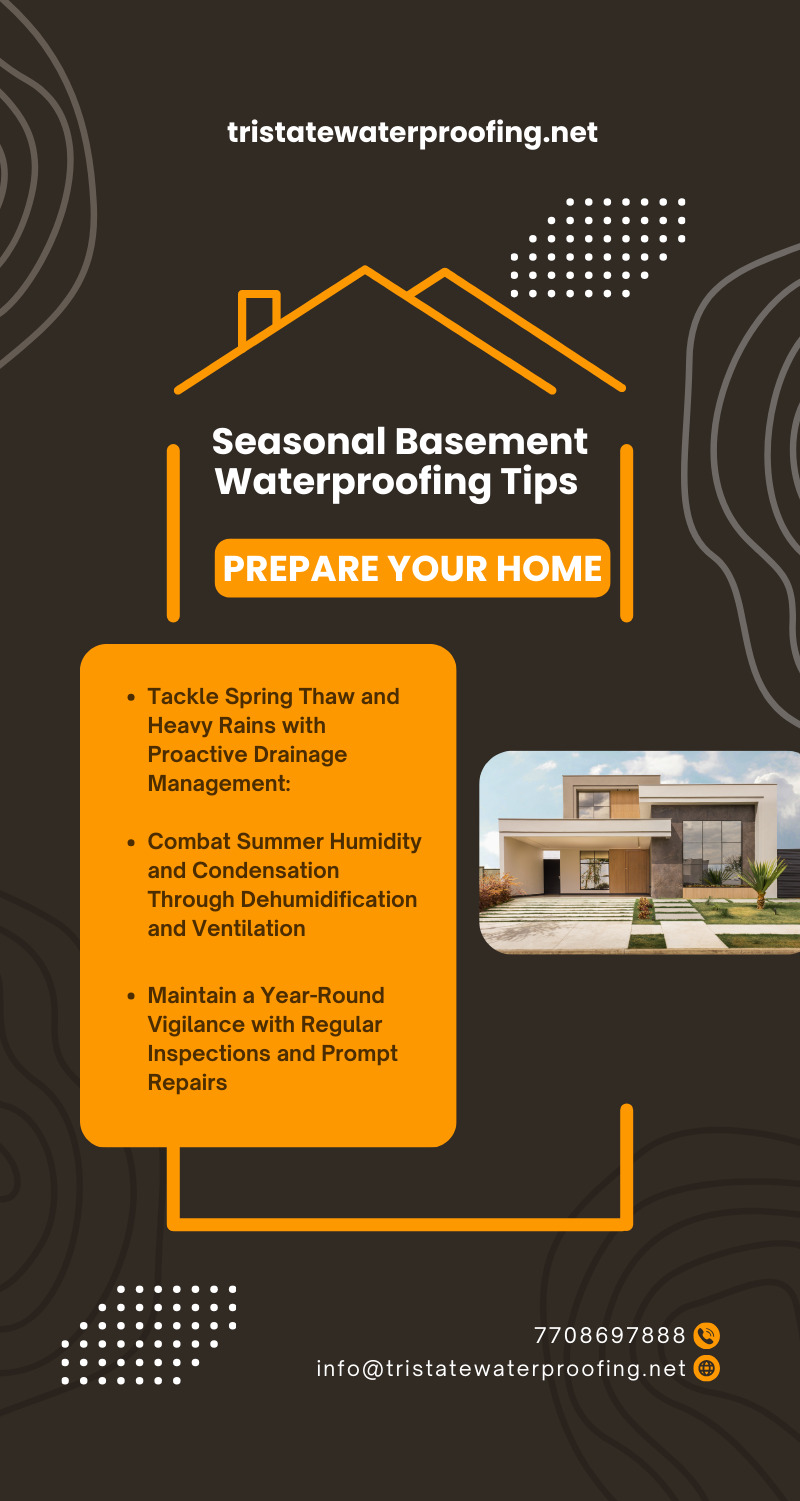
Seasonal Basement Waterproofing Tips: Year-Round Protection for Your Home
Water damage is one of the most common and costly issues homeowners face, especially in basements. With over 60% of U.S. homes experiencing some form of moisture problem, seasonal waterproofing is essential for year-round protection. From spring rains to winter freezes, each season brings unique challenges that can impact your basement’s health. This guide from Tri-State Waterproofing offers detailed strategies for every time of year, helping you prevent structural damage, mold growth, and costly repairs.
Whether you're inspecting for cracks in spring, managing humidity in summer, or preparing pipes for winter, our expert tips will keep your basement dry and safe. We also cover professional and DIY waterproofing methods, regular maintenance practices, and advice on choosing the right contractor. With Tri-State Waterproofing, you can count on proven solutions, quality service, and long-lasting protection—no matter the season.
0 notes
Text
Furnace Maintenance Checklist
Keep your furnace running efficiently with this simple maintenance checklist. Learn key tasks to improve performance and extend its lifespan!
#SmartHeating#HVACExperts#HVAC#FurnaceMaintenance#HVACMaintenance#HomeHeating#HomeMaintenanceTips#DIYHome#WinterPrep#HomeImprovement#HeatingSystem#HomeComfort#EnergyEfficiency
0 notes
Text
Why Your Water Bill Suddenly Spiked - A Septic System Investigation Guide
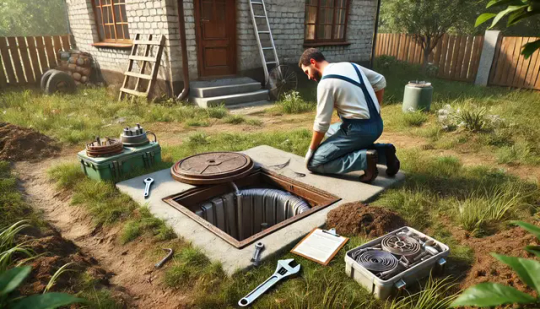
⚠️ QUICK REFERENCE GUIDE Average Monthly Water Usage (US Household):
Family of 2-3: 8,000-12,000 gallons
Family of 4-5: 12,000-16,000 gallons
Over 20,000 gallons? Red flag - keep reading
Look, I get it. That water bill hits your inbox and suddenly your coffee doesn't taste so good anymore. After 20 years of crawling through crawl spaces and diagnosing septic disasters, I can tell you one thing: that spike in your bill usually leads straight to your septic system.
Last month, I had a guy in Memphis about ready to go to war with his utility company over a $400 spike. Turns out his system was basically running an underground water park. Two hours later, problem solved, bill normal. That's the thing about septic issues - catch 'em early, they're usually quick fixes. Miss them, and suddenly you're financing my kid's college fund.
This guide? It's everything I wish homeowners knew before calling me in a panic. No fluff, no fancy plumber-speak - just the straight dirt on what's probably happening under your yard right now.
COST SAVER ALERT! 📊 Running toilet = 200 gallons/day Monthly cost = ~$70-100 extra 15-minute fix = $15-20 parts You do the math.
The Warning Signs Your Septic's Acting Up
Let me paint you a picture of what a troubled septic system looks like - and trust me, after two decades in the business, I've seen every variation possible.
Your first red flags aren't subtle, they're just easy to brush off:
That persistent toilet hiss? It's not background music - it's dumping 200 gallons daily down the drain. In dollar terms, that's like throwing a $20 bill into your toilet every week. I've watched homeowners ignore this for months, thinking it's "normal."
Phantom Flushes & Mystery Sounds:
Toilets refilling at 2 AM when everyone's asleep
Drains making sounds like they're auditioning for a coffee commercial
That weird gurgle every time you run the washing machine
Your Yard's Telling Tales:
Random patches looking like they've got premium fertilizer service
Spongy spots that feel like walking on a waterbed
That unmistakable swamp smell that hits you during yard work
Here's the kicker - these aren't just annoyances. Each one is a direct line to your wallet. Had a client in Phoenix ignore a running toilet for three months. His "small" problem turned into a $600 monthly water bill. Fixed it for under $50.
Think of these signs like your check engine light - sure, you can ignore it, but eventually, that cheap fix turns into a complete overhaul. Let's dig into what's actually causing these wallet-draining issues.
PRO TIP 🔧 Keep your water bills from the last 3 months. Compare these numbers:
Winter baseline (lowest usage)
Summer peak (highest normal)
Current bill Spike more than 30%? Time to investigate.

Common Culprits Behind the Spike
Look, after opening up thousands of septic systems, I can tell you there's usually a handful of usual suspects burning through your cash. Here's what's probably happening under your lawn right now:
Failed Flapper Valves:
Picture a rubber disk about the size of a CD. When it warps? Your toilet's basically running a marathon 24/7. Cost you maybe $15 to fix, but ignore it and watch your water bill climb faster than gas prices.
The Underground Money Drain:
Cracked pipes between house and tank (usually from that tree you planted years ago)
Loose connections that let groundwater seep in
Tank cracks that turn your system into a underground pool
Here's what drives me nuts: About 80% of the emergency calls I get started as tiny issues. Had a guy last week with a $900 water bill. His problem? A crack in his main line was letting in groundwater like it was running a secret car wash. Two months earlier, it would've been a $200 fix. Now? Let's just say his kid's not getting that PlayStation for Christmas.
Quick Reality Check - Most Common Issues I See:
Tank backups from years of "flushable" wipes (they're not)
Broken baffle that's got your tank running 24/7
Ancient pipes finally giving up the ghost
That DIY repair your brother-in-law swore he could handle
Listen, I'm not trying to scare you. But I've pulled enough dead septic systems out of the ground to know that a spike in your water bill isn't just numbers on paper - it's usually your system screaming for attention.
EXPERIENCE SNAPSHOT: ✓ 20 Years in Field ✓ 15,000+ Systems Inspected ✓ Licensed in [Your State] ✓ Certified Master Plumber
Quick DIY Checks - Save Your Cash
Before you burn a service call fee, here's exactly what I tell my own family to check. Twenty years of house calls have taught me these simple tests catch 90% of the obvious money-drainers:
The Famous Dye Test:
Grab some food coloring from your kitchen
Drop 5-6 drops in your toilet tank
Don't flush for 30 minutes
If your bowl turns color without flushing? Congrats, you found your leak
Water Meter Detective Work:
Write down your meter reading before bed
Don't use any water overnight (seriously, hold that midnight snack run)
Check again in the morning
Numbers changed? Something's running that shouldn't be
The 5-Minute Yard Walk:
Start at your tank's location
Walk in a grid pattern (trust me, be systematic)
Look for: sunken spots, weird puddles, grass that's way too happy
Bonus points: Do this early morning when dew makes wet spots obvious
Listen, I've saved folks thousands with these simple checks. Last summer, had a retired teacher about to drop $800 on a service call. Turned out her issue was a toilet flapper you could see was warped just by looking at it. $12 part, 15-minute fix.
But here's the thing - and I'm dead serious about this part - if you spot anything major, stop right there. Some problems need a pro before they turn your yard into a swamp or your wallet into a memory.
REFERENCE TABLE: When to DIY vs Call Pro
DIY-Safe:
Toilet dye tests
Meter readings
Visual inspections
Flapper replacements
CALL PRO:
Multiple drain backups
Yard flooding/odors
Tank access issues
Any digging needed
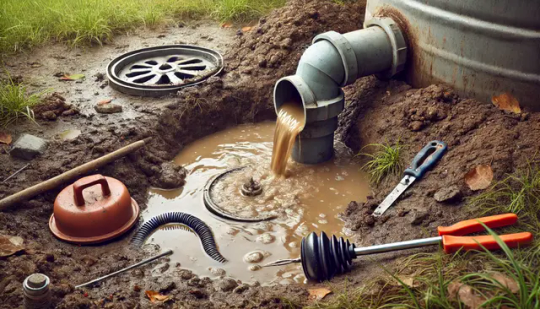
When to Call the Pros
Listen, I love a good DIY project as much as anyone. But after pulling three homeowners out of their own septic tanks last year (not kidding), I've got some hard rules about when to put down the shovel and pick up the phone:
Call Immediately When:
Your yard's starting to smell like a downtown bus station
Multiple drains are backing up at once
That wet spot in your yard's bigger than your car
Water's backing up into your tubs or sinks
The "Stop Everything" Scenarios:
Ground's spongy AND stinky (means your drain field's failing)
Sewage backup anywhere in the house
Multiple toilets running, even after checking flappers
Your water meter's spinning like a disco ball with everything off
Here's the brutal math: A typical service call runs $150-300. Sounds steep, right? But I just finished a $12,000 septic replacement for a guy who tried fixing a "minor" backup himself. He managed to crack his tank trying to "save money." That's about 40 service calls worth of cash down the drain.
Bottom line: Check the simple stuff yourself. But when things get sketchy, call someone who crawls through this stuff for a living. Your wallet (and your nose) will thank you later.
Remember - it's always cheaper to fix the issue you have than the one you create trying to be a hero. Trust me, septic work isn't where you want to start your DIY career.
Quick Summary - Save This Post
Trust me, your septic system picks the worst times to act up. Usually right before holidays or when you've got a house full of guests. So here's what you need to take away from all this:
Your Water Bill Is Your Early Warning System:
A sudden spike isn't random
Check the simple stuff first (toilets, visible leaks)
Don't ignore those wet spots in your yard
Save Your Cash With Prevention:
Monthly toilet checks are free
That $12 flapper beats a $900 water bill
Write down your normal monthly water usage somewhere
Look, I've been elbow-deep in septic systems for longer than I care to admit. The difference between a quick fix and a complete system replacement usually comes down to one thing: catching problems early.
Keep this guide handy. Do those simple checks we talked about. And remember - when in doubt, it's cheaper to get it checked out than wait until your yard turns into a swamp.
Your septic system's a lot like your car - give it a little attention now and then, and it'll keep running smooth. Ignore it completely, and well… let's just say I've got plenty of stories about what happens next.
Got questions? Drop them in the comments. I'll help if I can, but remember - some things really do need eyes (and nose) on the ground to diagnose properly.
[This guide's part of my Homeowner's No-BS Series. Follow for more straight talk on home maintenance.]
RELATED GUIDES:
Having septic system warning signs goes way beyond a high water bill
Essential water saving tips for septic systems to keep your bills in check
Our complete DIY septic inspection guide for the hands-on homeowner
Need more straight talk about septic maintenance? Check out Septic Tank Guy for weekly tips and guides.
#septicsystem#waterleaks#toiletrepair#plumbingproblems#homeinspection#propertycare#diyhomerepairs#homemaintenancetips#homemaintenance#homeownerproblems#septic#plumbing#waterbill#homerepair#diy#fixitright#homeownership#realestate
0 notes
Text

Spotting problems with your gutters, fascia, and soffits early can save you a lot of headaches (and money!). Learn to identify signs of damage like sagging, cracks, or leaks. Knowing what to look for is the first step to keeping your roof in top condition. More info here: https://www.fixallroofs.co.uk/services/gutter-facias-and-soffits
0 notes
Text
The Benefits of Downsizing: Is It Time for a Smaller Home?

While the idea of moving out of a beloved home might seem daunting at first, downsizing can lead to a host of emotional, financial, and practical benefits. For retirees, empty nesters, or those looking to simplify their lives, downsizing can provide the freedom, security, and comfort needed to fully enjoy the next chapter of life read more here
0 notes
Text
How to Maintain Your Home During and After a Remodel - Stone Cabinet Works
Have you just finished a major home remodeling project and want to keep your space looking its best?
Here are a few tips to maintain your home during and after the renovation:
1. During the Remodel:
• Protect Your Floors: Use drop cloths or floor runners to shield your floors from dirt, debris, and paint spills. • Cover Furniture: Wrap furniture in plastic or sheets to protect it from dust and damage. • Ventilate the Space: Open windows and use fans to circulate air and remove fumes from paints and other materials.
2. After the Remodel:
• Deep Clean: The first thing to do is to give your home a thorough cleaning to remove construction dust and debris. • Regular Maintenance: Schedule regular maintenance tasks like cleaning, dusting, and vacuuming. • Inspect for Damage: Check for any water damage, cracks, or other issues that may have occurred during the renovation. • Protect Your Investment: Consider investing in professional cleaning services and regular home inspections to keep your home in top condition.
Are you dreaming of a cozy home space?
If yes, then contact the best home improvement contractors to refresh your home space on a budget.
Contact no: (847)-453-9884
#homerenovation#homemaintenancetips#homeimprovement#homemaintenancechecklist#interiordesign#homedecor#homesweethome#illinoishomeowners#homemaintenance#homemaintenancetip#homemaintenanceservices#homereels#oaklandcounty#gurnee#gurneeillinois
0 notes
Text
How to Choose the Right Roof Shingle Cleaner - All You Need to Know
youtube
Picking the best roof shingle cleaning affects both the immediate appearance and long-term health of your roof, so it's important to maintain both. This guide outlines the considerations that should go into making a safe and effective decision.
Business Hours:
Monday - Friday: 9:00 am to 5:00 pm
Saturday - Sunday: Closed
...............................
The ProClean Team
Location: Lynnwood, WA 98037, United States
Phone: (425) 238 1523
Email: [email protected]
Visit our website here: https://goteamproclean.com
#RoofShingleCare#HomeMaintenanceTips#CleanRoofSolutions#ProCleanTeamAdvice#LynnwoodWAHomeCare#ShingleCleaningGuide#ExpertCleaningTips#Youtube
0 notes
Text
Ultimate Guide to Wood Floor Care and Maintenance
Wooden flooring offers a classic and refined enhancement to homes, infusing warmth, personality, and worth into living areas. Maintaining their appearance and longevity for future generations, however, demands appropriate upkeep and attention. This thorough overview will guide you through the essential aspects of wood floor care, covering daily cleaning practices and long-term conservation methods.
#WoodFloorCare\#HardwoodMaintenance#FloorPreservation#HomeMaintenanceTips#FlooringUpkeep#TimberFloorCare#HardwoodLongevity#FloorProtection#WoodFloorGuide#DIYFloorCare#InteriorMaintenance#WoodFloorTips
0 notes
Text
Mastering Garage Door Spring Replacement: A Comprehensive Guide to Safety and Success
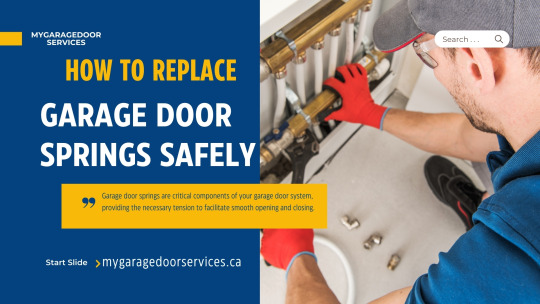
Garage door springs are critical components of your garage door system, providing the necessary tension to facilitate smooth opening and closing. However, due to the wear and tear they endure over time, replacing garage door springs becomes inevitable. Yet, it's a task that requires precision and caution to ensure safety for both you and your property. In this guide, we'll delve into the essential steps and safety measures for replacing garage door springs safely.
Understanding the Risks Associated with Garage Door Spring Replacement
Before embarking on the replacement process, it's crucial to comprehend the potential hazards involved. Garage door springs are under immense tension, and mishandling them can lead to serious injuries or property damage. Therefore, it's advisable to exercise caution and, when in doubt, seek professional assistance.
Step-by-Step Guide to Safe Garage Door Spring Replacement:
Prepare the Workspace: Begin by clearing out any clutter or obstructions around your garage door to create a safe working environment. Ensure ample lighting and gather all necessary tools and equipment, including winding bars, safety goggles, and gloves.
Release the Tension: Before removing the old springs, it's essential to release the tension from the garage door system. This can be achieved by carefully disconnecting the opener and manually lowering the door until it's fully closed.
Identify the Type of Spring: Garage doors typically use either torsion springs or extension springs. Identify the type of spring installed in your system before proceeding with the replacement process. Each type requires different techniques for safe removal and installation.
Remove the Old Springs: Using winding bars and following manufacturer guidelines, carefully unwind and remove the old springs from the torsion tube or track hanger. Exercise caution and avoid applying excessive force to prevent accidents.
Install the New Springs: Once the old springs are removed, it's time to install the new ones. Ensure that the new springs are compatible with your garage door system and follow manufacturer instructions meticulously. Use winding bars to wind the springs to the appropriate tension level.
Test the Door: After installing the new springs, cautiously test the functionality of your garage door by manually opening and closing it several times. Look out for any unusual noises or irregular movements that may indicate an installation error.
Reconnect the Opener: Once you're satisfied with the replacement process, reconnect the garage door opener and test its operation. Make any necessary adjustments to ensure smooth and seamless functionality.
Safety Precautions to Remember:
Always wear protective gear, including safety goggles and gloves, when working with garage door springs.
Never attempt to repair or replace springs without proper knowledge and experience. When in doubt, consult a professional technician.
Avoid standing directly under the garage door or springs while performing maintenance or repairs.
Regularly inspect your garage door springs for signs of wear and tear and replace them as needed to prevent accidents.
By following these steps and safety precautions, you can effectively replace garage door springs while prioritizing safety and minimizing risks. Remember, when it comes to garage door maintenance and repairs, safety should always be the top priority.
#GarageDoorSafety#DIYGarage#HomeMaintenanceTips#GarageImprovement#SafetyFirst#SpringReplacement#GarageDoorDIY#HomeRepair#GarageProjects#SpringSafety#DIYProjects#HomeImprovement#GarageRenovation#SafeRepairs#DIYTips#HomeRenovation#SpringMaintenance#DIYHomeImprovement#GarageUpgrades#HomeSafetyTips
0 notes
Text
5 Essential Tips to Choose the Best Plumber in Burwood

Plumbing issues can arise when least expected, plunging your day into inconvenience. Whether it's a leaky faucet, a clogged drain, or a more severe problem, the urgency to find a solution remains paramount. This guide aims to navigate you through the process of selecting the best plumber in Burwood, offering insights and advice to ensure your plumbing needs are met with expertise and efficiency.
Introduction to Plumbing Services in Burwood
Burwood, a vibrant suburb, presents a unique blend of historical residences and modern developments. This diversity extends to the plumbing needs of its residents, ranging from routine maintenance to emergency repairs. Professional plumbing services in Burwood are not just about fixing problems; they're about providing peace of mind, and ensuring that residents have access to clean, running water and functional sanitation facilities.
Plumber Burwood: A Profile
Plumbers in Burwood are more than just technicians; they are guardians of public health, comfort, and well-being. With qualifications spanning various certifications and years of experience, these professionals offer a wide range of services. From installing new fixtures to repairing old pipes, their expertise ensures your plumbing system functions optimally.
Choosing the Right Plumber for Your Needs
The key to selecting the right plumber lies in knowing what to look for. Recommendations from friends and online reviews can provide valuable insights while verifying credentials and experience ensures you're hiring a professional capable of addressing your specific needs. However, it's also important to be aware of red flags, such as lack of transparency in pricing or poor communication.
Emergency Plumbing Services: What to Do in a Crisis
When a plumbing emergency strikes, time is of the essence. Knowing how to quickly respond can prevent minor issues from escalating into major problems. This section will guide you through the steps to take in a crisis, emphasizing the importance of having a reliable plumber on speed dial.
Cost Considerations for Plumbing Services
Understanding the cost of plumbing services is crucial for homeowners. This section will break down typical pricing structures, offering tips on how to get the best value without compromising on quality. Whether it's a simple repair or a complex installation, knowing what to expect can help you budget effectively.
Plumbing Maintenance Tips for Burwood Homes
Regular maintenance is the best way to avoid unexpected plumbing issues. This section provides preventive measures and DIY tips to keep your plumbing system in top condition. From simple practices like regular drain cleaning to advice on identifying potential problems, these tips can save you time and money in the long run.
Innovative Plumbing Technologies and Trends
The plumbing industry is constantly evolving, with new technologies and trends aimed at improving efficiency and sustainability. This section explores the future of plumbing in Burwood, highlighting advancements that are shaping the industry and how they can benefit homeowners.
Sustainability and Plumbing
Eco-friendly plumbing solutions offer a way for Burwood residents to reduce their environmental impact while saving on utility bills. This section delves into water conservation techniques and tools, providing practical advice for those looking to make their homes more sustainable.
Customer Experiences with Burwood Plumbers
Hearing from others can provide reassurance and insight when choosing a plumber. This section features testimonials and case studies from satisfied customers, showcasing the positive impact of professional plumbing services on local homes and businesses.
Legal and Safety Standards in Plumbing
The safety and legality of plumbing work cannot be overstated. This section covers the compliance and regulations governing plumbers in Burwood, emphasizing the importance of adhering to safety protocols to protect both technicians and homeowners.
Conclusion: Why a Burwood Plumber is Your Best Choice
Choosing a local plumber in Burwood comes with numerous benefits, from personalized service to quick response times. This final section recaps the advantages of hiring a professional within the community, offering final thoughts and recommendations to ensure your plumbing needs are met with expertise and care.
#PlumberBurwood#HomeMaintenanceTips#PlumbingServices#EmergencyPlumbing#DIYPlumbing#SustainableLiving#WaterConservation#plumber#ProfessionalServices#HomeImprovement
0 notes
Text
Seasonal Basement Waterproofing Tips: Year-Round Protection for Your Home
Water damage is one of the most common and costly issues homeowners face, especially in basements. With over 60% of U.S. homes experiencing some form of moisture problem, seasonal waterproofing is essential for year-round protection. From spring rains to winter freezes, each season brings unique challenges that can impact your basement’s health. This guide from Tri-State Waterproofing offers detailed strategies for every time of year, helping you prevent structural damage, mold growth, and costly repairs.
Whether you're inspecting for cracks in spring, managing humidity in summer, or preparing pipes for winter, our expert tips will keep your basement dry and safe. We also cover professional and DIY waterproofing methods, regular maintenance practices, and advice on choosing the right contractor. With Tri-State Waterproofing, you can count on proven solutions, quality service, and long-lasting protection—no matter the season.
0 notes